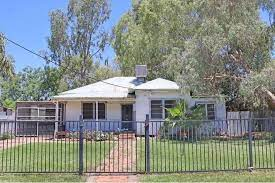Dedicated funding, more low density housing needed to solve regional housing crisis
Luke Williams
09 March 2024, 8:29 PM
 Image: ABC.
Image: ABC. More support for council infrastructure, a reduction in planning delays and a regional population plan have come out as the key ideas at the National Regional Housing Summit.
The Summit was hosted by the Regional Australia Institute (RAI), the Real Estate Institute of Australia, and Master Builders Australia; and supported by Bendigo and Adelaide Bank, the Australian Forest Products Association, and the National Farmers Federation.
Speaking to the Western Plains App Master Builders Australia spokesperson Dee Zegarac said that three main things to be occur to address what she calls the “housing supply crisis” in regional Australia.

Dee Zegarac. Image: Linkedin.
“We need to make sure we have enough of the skilled workers and tradies available to build those homes, councils need to be supported to be building roads and sewerage because that is delaying projects at the moment,” Ms Zegarac said.
“We also need to look at going beyond the standard detached house model and looking at more medium to lower density housing”.
She said at the moment there was a lack of capacity in local industry to deliver lower density housing projects they are both big projects and there often isn't just the return on investment that private investors are looking for.
“We are working with the government to reduce the time and cost it takes to build those projects. We need to make sure the planning delays are not there”.
More than 300 people from across Australia converged on Canberra for the forum and contributed online to a discussion on how to ease the challenges before regional communities.
These challenges include a more than 50% increase in regional home prices; average rental vacancies below 1.4%; increasing levels of homelessness; and a lack of diversity of housing types – all in parallel with record regional population growth and job vacancies.

PHOTO: House for sale in Bourke. Image: Domain.
RAI CEO Liz Ritchie said the Summit shone a light on the creative and collaborative solutions regional communities were devising to address localised issues.
“When Griffith City Council in New South Wales recognised the local economy was suffering due to a lack of appropriate worker accommodation, it worked in partnership with Argyle Housing to develop new affordable housing in the community. In Winchelsea, Victoria a project’s underway to build new independent living units for older residents, who want to downsize but can’t due to a lack of smaller houses in the area,” Ms Ritchie said.
She said the federal government had a fund to support community infrastructure we need to see that as a rolling fund along with more collaboration.
Real Estate Institute of Australia (REIA) CEO Anna Neelagama said the Summit found there was a need for regional-specific targets and increased funding to address challenges faced by communities, such as soaring home prices, low rental vacancies, and a lack of housing diversity.

PHOTO: Anna Neelagama. Image: Linkedin.
“While there is concern of the growing impact of short-stay accommodations on regional areas, what is truly lacking is supply of smaller one-and-two bedroom homes,” Ms Neelagama said.
“With the surge in population, there is a need for thoughtful consideration and planning to mitigate potential disruptions to housing markets and the broader community in regional Australia.”
The RAI’s Regionalisation Ambition- a 10 year, 20 goal framework for an Australia where more people live in the regions- aims to see by 2032, regional rental vacancy rates increasing to above 3% and for annual building approvals to keep pace with population growth.
The regional vacancy rate decreased from 1.5% in September 2022 to 1.2% in September 2023 and monthly regional building approvals have been decreasing since August 2021.
As far the controversial issues of whether to wind back negative gearing and the capital gains tax discount Ms Zegarac said “Our position is that we support the current negative gearing/capital gains tax framework because we have a supply crisis and if you tinker it we know that means you will build less homes”.
WHAT'S ON



